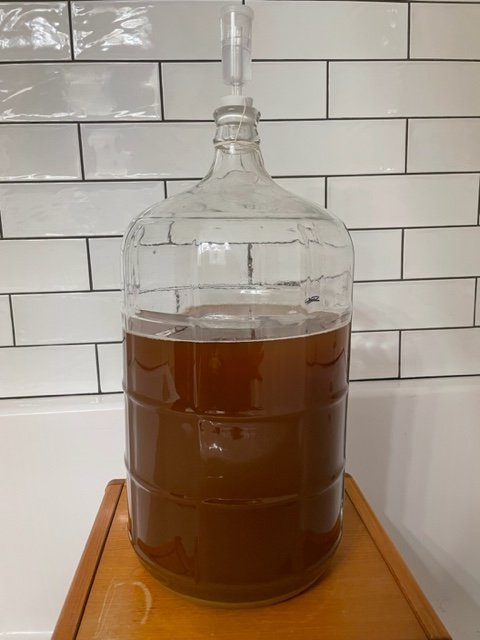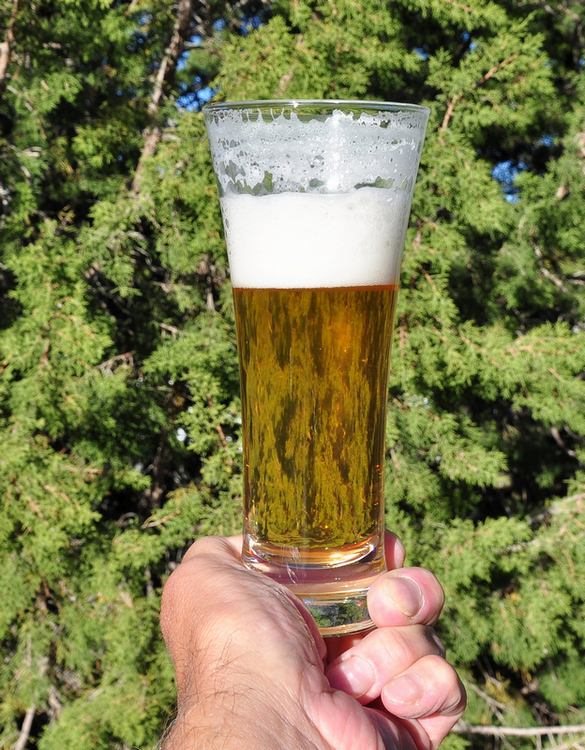pacostagli
New Member
Hi everyone,
Long time lurker, first time poster. I've been doing extract brewing for about a year now and have maybe half a dozen batches under my belt. I've gotten more into the actual process, trying to make the best batch that I can, now that the novelty has worn off. At first, I was impressed that I could make something even somewhat consumable.
I currently have a Cream Ale extract kit in the works. I took the OG and was bang on based on with the amount of water that I added to bring it roughly to 5 gallons. The kit recommends the OG being between 1.049-1.053 and I was at 1.051. All good so far. The carboy is pretty active, with a little cyclone of gaseous activity going on in it. I put it in the carboy Saturday afternoon, so today being Tuesday, it's been going for three days.
When would you recommend moving this to my secondary fermenter?
The paraphrased instructions say that fermentation will begin in 24-48 hours... To take the gravity again in 4-6 days to see if it's within the FG range of 1.010-1.014. If not, allow it to continue to ferment until it reaches the FG range. Then in regard to using a secondary fermenter, the instructions state that as fermentation slows (5-7 days), BUT BEFORE IT COMPLETES, transfer the beer into Secondary and leave it for about two weeks.
So to my understanding, 4-6 days after brewing, I should take the gravity again and if it's within the FG, transfer it to Secondary and leave it for two weeks, then take the gravity again at the end of the two weeks before priming & bottling for my ABV calc? If the FG has not been achieved within 4-6 days of brewing, leave it for another day or two or three, testing the gravity periodically until it hits the FG range, and then move into Secondary and leave it for two weeks?
Also, is it recommended to ever swirl the Primary or Secondary to reincorporate the particulate at the bottom, allowing the yeast to be reincorporated? I heard this while at a local brewery from a more seasoned brewer than myself. I've done it on one or two of my brews and it seems to cause extra gaseous activity, but not sure if that helped or hurt the final product.
Day 1 vs Day 3


Long time lurker, first time poster. I've been doing extract brewing for about a year now and have maybe half a dozen batches under my belt. I've gotten more into the actual process, trying to make the best batch that I can, now that the novelty has worn off. At first, I was impressed that I could make something even somewhat consumable.
I currently have a Cream Ale extract kit in the works. I took the OG and was bang on based on with the amount of water that I added to bring it roughly to 5 gallons. The kit recommends the OG being between 1.049-1.053 and I was at 1.051. All good so far. The carboy is pretty active, with a little cyclone of gaseous activity going on in it. I put it in the carboy Saturday afternoon, so today being Tuesday, it's been going for three days.
When would you recommend moving this to my secondary fermenter?
The paraphrased instructions say that fermentation will begin in 24-48 hours... To take the gravity again in 4-6 days to see if it's within the FG range of 1.010-1.014. If not, allow it to continue to ferment until it reaches the FG range. Then in regard to using a secondary fermenter, the instructions state that as fermentation slows (5-7 days), BUT BEFORE IT COMPLETES, transfer the beer into Secondary and leave it for about two weeks.
So to my understanding, 4-6 days after brewing, I should take the gravity again and if it's within the FG, transfer it to Secondary and leave it for two weeks, then take the gravity again at the end of the two weeks before priming & bottling for my ABV calc? If the FG has not been achieved within 4-6 days of brewing, leave it for another day or two or three, testing the gravity periodically until it hits the FG range, and then move into Secondary and leave it for two weeks?
Also, is it recommended to ever swirl the Primary or Secondary to reincorporate the particulate at the bottom, allowing the yeast to be reincorporated? I heard this while at a local brewery from a more seasoned brewer than myself. I've done it on one or two of my brews and it seems to cause extra gaseous activity, but not sure if that helped or hurt the final product.
Day 1 vs Day 3


















































![Craft A Brew - Safale S-04 Dry Yeast - Fermentis - English Ale Dry Yeast - For English and American Ales and Hard Apple Ciders - Ingredients for Home Brewing - Beer Making Supplies - [1 Pack]](https://m.media-amazon.com/images/I/41fVGNh6JfL._SL500_.jpg)










